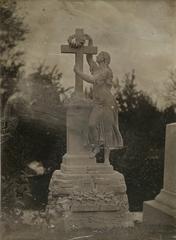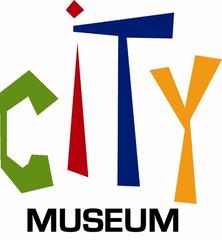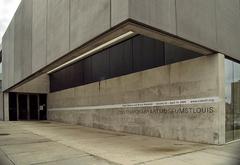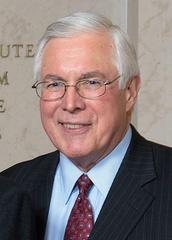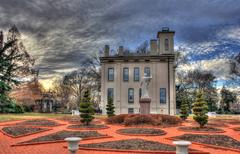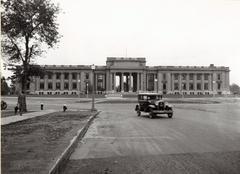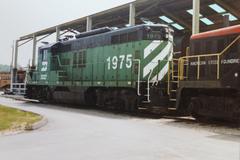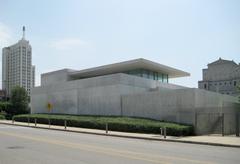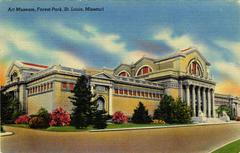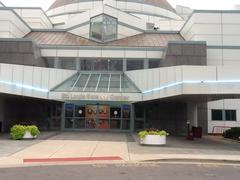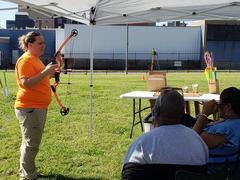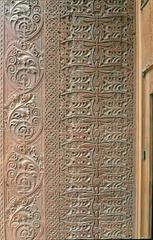Tandy Park Visiting Hours, Tickets, and St. Louis Historical Sites Guide
Date: 03/07/2025
Introduction: Tandy Park’s Significance in St. Louis
Tandy Park, located in the Ville neighborhood of St. Louis, Missouri, stands as a distinguished monument to African American heritage, community resilience, and educational achievement. Often celebrated as the “village green” of the Ville, Tandy Park has served as a central gathering place for generations, hosting social, cultural, and athletic events since the late 19th century. Its enduring presence is a testament to the strength and spirit of its surrounding community.
The park is intricately linked to iconic institutions such as Sumner High School—the oldest African American high school west of the Mississippi—and the historic Homer G. Phillips Hospital, once the largest Black medical facility in the U.S. These and other nearby landmarks, including the Tandy Community Center, form a rich tapestry of African American accomplishment and self-determination during and after segregation.
Today, Tandy Park provides not only a historic landscape but also modern amenities: accessible recreation facilities, inclusive playgrounds, and a pioneering digital learning lab that bridges the digital divide. Open daily from dawn to dusk with no admission fee, the park offers visitor-friendly features such as interpretive signage, athletic courts, walking paths, and community spaces. Its central location, easily reachable by car, public transit, or bicycle, makes it a convenient starting point for exploring other St. Louis attractions, such as the National Blues Museum and Forest Park.
Whether you’re a history enthusiast, a family seeking recreation, or a visitor eager to connect with African American heritage, Tandy Park offers a comprehensive and accessible experience. This guide provides detailed visitor information—including hours, accessibility, parking, and nearby attractions—as well as insights into the park’s architecture, events, and community programs. For further details and updates, consult resources like Saint Louis Patina, Do314, and the St. Louis Parks Department.
Table of Contents
- Discover Tandy Park: A Historic Gem in St. Louis’s Ville Neighborhood
- Origins and Early Development
- Architectural and Institutional Ensemble
- Visiting Tandy Park: Hours, Access, and Directions
- Travel Tips and Nearby Attractions
- Transformations and Modern Changes
- Cultural Significance and Community Impact
- Notable Events and Milestones
- Preservation and Contemporary Relevance
- Visitor Information: Hours, Tickets, and Accessibility
- Architectural Features and Urban Context
- Sporting Legacy and Recreation
- Arts, Culture, and Civic Life
- Festivals and Community Events
- Accessibility and Amenities
- Safety and Community Engagement
- Playground and Recreational Facilities
- Sports Amenities
- Walking Paths and Green Spaces
- Community Gathering Spaces
- Restroom and Drinking Water Facilities
- Lighting and Security
- Parking and Transportation
- Environmental and Sustainability Features
- Cultural and Educational Elements
- Connectivity to Other Attractions
- Visiting Hours, Tickets, and Special Events
- Visitor Tips
- Honoring Captain Charlton H. Tandy
- The Ville: A Cradle of Black Culture and History
- Digital Inclusion and Modern Empowerment
- Social Impact and Neighborhood Revitalization
- Preservation of African American Heritage
- Practical Visitor Information
- Frequently Asked Questions (FAQ)
- Visuals and Media Recommendations
- Plan Your Visit and Stay Connected
Discover Tandy Park: A Historic Gem in the Ville
Tandy Park is a vibrant landmark at the heart of the Ville, offering a unique lens into African American heritage and community life. Revered as the “village green,” it has been a focal point for education, gatherings, and celebrations for over a century. The park’s story is deeply embedded in the Ville’s history, a neighborhood that became a thriving center of Black life during segregation.
Origins and Early Development
Established as an open space for recreation and public gatherings, Tandy Park is surrounded by foundational educational institutions: Harris Teachers College (later Turner Middle School) to the west, Sumner High School to the south, and the original Turner School to the north. These institutions cemented the park as a hub of community pride and educational advancement (Saint Louis Patina).
Architectural and Institutional Ensemble
-
Sumner High School: This Georgian Revival structure, established in 1875, is the oldest African American high school west of the Mississippi. Alumni include cultural icons like Chuck Berry and Tina Turner.
-
Harris Teachers College / Turner Middle School: To the west, this college trained African American teachers essential for the community’s educational growth.
-
Homer G. Phillips Hospital: Once the largest Black medical facility in the nation, this hospital stands as a symbol of Black medical achievement and resilience.
Visiting Tandy Park: Hours, Access, and Directions
- Hours: Open daily from dawn to dusk, year-round.
- Admission: Free; no tickets required.
- Accessibility: Wheelchair-accessible with paved paths and accessible parking.
- Location: North Grand Blvd. and Natural Bridge Ave., St. Louis, MO 63113.
- Parking: Designated street parking surrounds the park; on-site parking is limited.
Travel Tips and Nearby Attractions
- Best Time to Visit: Spring and fall are ideal for outdoor enjoyment and walking tours.
- Nearby Sites: Explore the National Blues Museum and Saint Louis University campus.
- Local Dining: Experience local cuisine at eateries in the Ville for a full cultural immersion.
Transformations and Modern Changes
Tandy Park has evolved over the years. While some areas have been fenced and repurposed for school athletics, the park remains a symbol of unity and historic continuity (Saint Louis Patina).
Cultural Significance and Community Impact
As a testament to African American resilience, Tandy Park has hosted civil rights rallies, festivals, and educational ceremonies. The park and its surrounding institutions draw regional visitors and reinforce the Ville’s legacy as a cultural and educational center.
Notable Events and Milestones
- Graduation and athletic events from Sumner High School.
- Civil rights gatherings and cultural festivals.
- Ongoing athletic achievements rooted in the park’s facilities.
Preservation and Contemporary Relevance
Preservationists and local organizations continue to protect Tandy Park’s legacy through restoration, educational programs, and public history initiatives (City of St. Louis Parks).
Architectural Features and Urban Context
Historical Development and Setting
Tandy Park’s origins reflect early 20th-century efforts to provide green spaces for St. Louis’s expanding neighborhoods (Do314). As a cornerstone of the Ville, the park became a vital communal space during segregation, mirroring the neighborhood’s cultural and educational vibrancy.
Notable Structures and Landscape
The recreation center, built in mid-century modernist style, features brick and concrete, expansive windows, and functional design. The park’s open layout includes lawns, mature trees, walking paths, basketball courts, playgrounds, and picnic areas—encouraging inclusive recreation (Do314).
Preservation and Adaptive Use
Renovations have modernized Tandy Park while respecting its historic character. ADA compliance and adaptive reuse ensure the park continues to meet current community needs (NextSTL).
Community Life: Culture, Sports, and Events
African American Heritage
Tandy Park is intricately tied to the Ville’s legacy. It has hosted community celebrations, youth programs, and civic events, symbolizing resilience and achievement (NextSTL).
Sporting Legacy
Basketball courts and athletic fields nurture local talent and provide accessible, affordable programming, supporting St. Louis’s tradition of public sports facilities (Do314; Explore St. Louis).
Arts and Civic Engagement
The recreation center hosts art workshops, music performances, and community meetings. Partnerships with local organizations enhance programming and civic involvement (Explore St. Louis).
Festivals and Community Gatherings
Year-round events, including concerts and health fairs, foster unity and pride, attracting visitors from across the city (St. Louis Calendar).
Visitor Information: Hours, Accessibility, and Amenities
- Visiting Hours: Dawn to dusk, year-round.
- Recreation Center: Open Monday–Saturday, with extended summer hours; check Do314 for updates.
- Admission: Free.
- Tours: Guided tours available by appointment.
Transportation and Parking
Accessible via several MetroBus routes; free street parking is available. Bicycle racks are provided at park entrances.
Accessibility
Paved, ADA-compliant paths, inclusive playground equipment, and accessible restrooms ensure all visitors are welcome (Do314).
Safety
Active community stewardship, city security patrols, and emergency call boxes enhance safety. Visitors are encouraged to support local businesses and engage with community events.
Park Features and Layout
Playground and Recreation
Modern, inclusive play structures serve children of all ages and abilities. Shaded seating and safety-focused design foster active play and supervision (RecPlanet).
Sports Facilities
Outdoor basketball courts and open fields support a variety of sports, including informal games and leagues.
Walking Paths and Green Spaces
Wheelchair-accessible paths loop around playgrounds and sports areas. Mature trees offer shade for relaxation and exercise (MyVintageMap).
Gathering Spaces
Picnic tables, shelters, and open lawns accommodate family gatherings and neighborhood events.
Amenities
- Restrooms: Open during daylight hours.
- Drinking Fountains: Strategically placed for convenience.
- Lighting: Overhead lights along major paths and courts enable safe evening use.
- Sustainability: Landscaping with native plants, eco-friendly practices, and support for urban wildlife.
Honoring Captain Charlton H. Tandy
Named for Captain Charlton H. Tandy—a Civil War veteran, Black education pioneer, and civil rights activist—the park and community center celebrate his legacy through interpretive signage and educational programming (Step Outside).
The Ville: Cradle of Black Culture and History
By the early 20th century, the Ville flourished as a Black cultural and middle-class hub. Landmarks such as Sumner High School, Annie Malone Children’s Home, and Homer G. Phillips Hospital enrich the neighborhood’s historic significance (Explore St. Louis).
Digital Inclusion and Empowerment
In 2025, the Tandy Community Center launched a state-of-the-art digital learning lab, offering free Wi-Fi, computer access, and digital literacy programs. Supported by BJC Foundation, Dell Technologies, and NPower, the initiative bridges the digital divide, providing essential resources for education, job search, and telehealth (Spectrum Local News).
Preservation of Heritage and Revitalization
Despite population loss and urban challenges, Tandy Park remains a beacon of hope. Recent improvements, including new landscaping and infrastructure, underscore ongoing revitalization (St. Louis City Talk). The Tandy Community Center’s listing on the National Register of Historic Places highlights its cultural importance (Wikipedia).
Practical Visitor Information
- Hours: Park—dawn to dusk; Community Center—see posted hours.
- Admission: Free.
- Parking: Street parking; observe signage.
- Public Transit: Multiple MetroBus routes.
- Accessibility: Wheelchair-accessible paths and restrooms.
- Wi-Fi: Free within 500 feet, courtesy of the digital learning lab (Spectrum Local News).
Frequently Asked Questions (FAQ)
Q: What are Tandy Park’s visiting hours?
A: Open daily from dawn to dusk.
Q: Is admission free?
A: Yes, there are no entry fees.
Q: Are pets allowed?
A: Yes, but must be leashed and cleaned up after.
Q: Is the park accessible?
A: Yes, with ADA-compliant paths and amenities.
Q: Is Wi-Fi available?
A: Yes, free Wi-Fi is accessible throughout much of the park.
Visuals and Media Recommendations
Incorporate images of the playground, basketball courts, tennis courts, community center, and historical signage. Suggested alt text: “Tandy Park playground in St. Louis,” “Arthur Ashe Tennis Courts at Tandy Park,” “Tandy Community Center historic building,” “Tandy Park digital learning lab.” Interactive maps and virtual tours can further enhance visitor engagement.
Key Amenities at a Glance
| Feature | Details |
|---|---|
| Playground | Modern, inclusive equipment for all ages |
| Sports Facilities | Basketball courts, tennis courts, open fields |
| Walking Paths | Paved, shaded, wheelchair-accessible |
| Gathering Spaces | Picnic tables, shelters, open lawns |
| Restrooms | Available during daylight hours |
| Drinking Fountains | Throughout the park |
| Lighting | Overhead lights for evening safety |
| Parking | Street parking, bike racks, public transit access |
| Accessibility | ADA-compliant paths and play equipment |
| Cultural Signage | Information on Captain Charlton H. Tandy and local history |
| Wi-Fi | Free within 500 feet (digital learning lab initiative) |
Call to Action
Stay informed on Tandy Park’s events, programs, and visitor tips:
- Download the Audiala app for guided tours and updates.
- Follow our social media for the latest news.
- Visit Do314, St. Louis Calendar, and Saint Louis Patina for more details.
Sources and Further Reading
- Saint Louis Patina: Tandy Park—An Ensemble of Public Buildings in the Ville
- Do314: Tandy Park Recreation Center
- RecPlanet: Tandy Park
- Step Outside: Tandy Park
- Explore St. Louis: Historic St. Louis Guide
- Wikipedia: Tandy Community Center
- Spectrum Local News: Digital Learning Lab
- St. Louis City Talk: Tandy Park
- NextSTL: St. Louis—A Forgotten Cultural Hub
- Explore St. Louis
- MyVintageMap: Is St. Louis Worth Visiting?
- Town & Tourist: Things to Do in St. Louis
- St. Louis Calendar
Experience Tandy Park—where St. Louis history, culture, and community converge. Plan your visit and become part of the vibrant legacy of the Ville.
